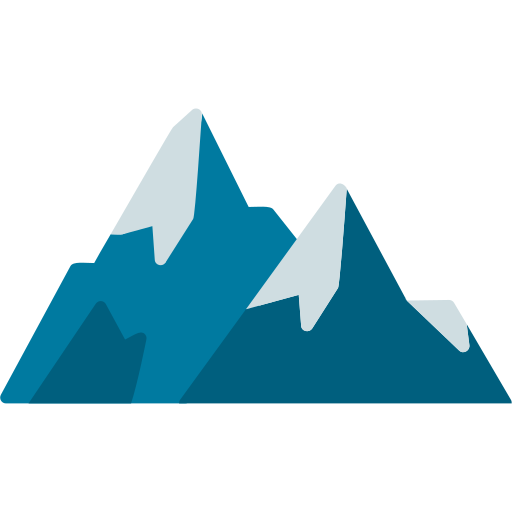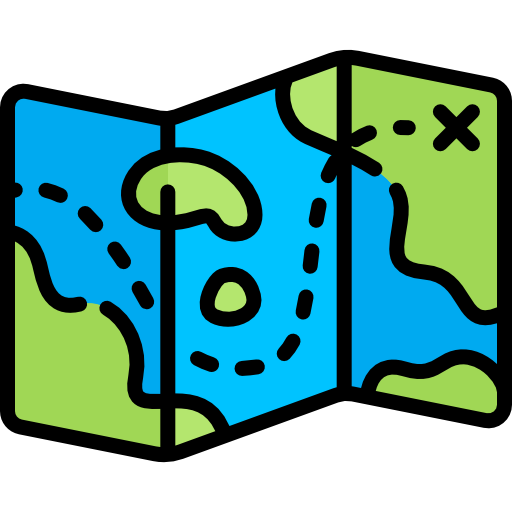Tarsar Marsar Trek
15,000 / Per Person

Altitude :
13500 Ft.

Duration:
7 Days

Trek Length
48 KM

Base Camp:

Trek Difficulty :
Moderate

Altitude :
13500 Ft.

Duration:
7 Days

Trek Length
48 KM

Base Camp:

Trek Difficulty :
Moderate
Overview
Trek Name: Tarsar Marsar Trek
Duration: 7 Days
Adventure Type: Trekking
Base Camp: Aru
Season: Monsoon
Months: July | August | September
Country: India
Altitude: 13,500 Ft.
Difficulty Level: Moderate
Rail Head: Jammu
Accommodation: Camping (Twin sharing) & Hotel/Guesthouse (Separate for Male & Female)
Food: Meals provided during the trek & at Hotel/Guesthouse (Veg & Eggs)
Location: Kashmir
Distance: 48 Km
Trail Type: Circular route with camping at different locations, starting and ending at the same point.
Nearest Airport: Sheikh Ul-Alam International Airport, Srinagar
Highlights:
5% GST applicable (Goods and Services Tax)
Services included from Aru to Aru
Meeting Point (Pickup/Drop Point): Tourist Reception Center, Rajbagh, Srinagar
Reporting Time: 12:00 PM
Drop Time: 6:30 PM to 7:30 PM (Timings may vary based on weather and road conditions)
It is recommended to arrive in Srinagar a day before the trek to avoid delays.
Why Tarsar Marsar is a Must-Do Trek?
Imagine waking up amidst the meadows of Kashmir on your journey to Tarsar Marsar. In that moment, your entire life will seem like a distant dream, as though you have stepped into paradise. The famous Persian couplet truly resonates— If there is a paradise on Earth, it is here, it is here, it is here!
The beauty of Kashmir is beyond words, stirring poetic emotions in all who witness it. But beyond its timeless romantic charm, the Tarsar Marsar Trek offers a unique trekking experience like no other.
From lush green meadows that feel like velvet underfoot to enchanting pine forests filled with fresh fragrance, from picturesque hamlets with welcoming locals to the serene glacial lakes that give the trek its name, every aspect of this journey is breathtaking.
Despite its mesmerizing landscapes, Tarsar Marsar is not physically demanding, making it an accessible yet rewarding adventure for trekkers. The trek requires minimal acclimatization and offers a balanced level of challenge and enjoyment.
Additional Information:
Virtual Meeting Video: A pre-trek briefing is available for participants.
Emergency Buffer Days: In case of unforeseen circumstances, buffer days will be planned. Details will be shared at the time of registration.
Embark on this unforgettable journey and experience the surreal beauty of Kashmir like never before!
Itinerary
Day-1: Srinagar To Aru Base Camp
- Altitude: 2,400 m/ 7,950 ft.
- Drive Distance(Srinagar To Aru): 112 km.
- Drive Time: 4 hrs.
Day-2: Aru To Lidderwat
- Altitude: 2,800 m/ 9,150 ft.
- Trek Distance: 10 km | Duration: 6 – 7 hrs.
Day-3: Lidderwat To Shekwas
- Altitude: 3,350 m/ 11,000 ft.
- Trek Distance: 6 km | 5 hrs.
Day-4: Shekwas To Tarsar And Explore Tarsar
- Altitude: 3,800 m/ 12,500 ft.
- Trek Distance: 4 km | 3 – 4 hrs.
Day-5: Tarsar To Sundarsar
- Altitude: 4,000 m/ 13,000 ft.
- Trek Distance: 6 km | 5 hrs.
Day-6: Visit Marsar And Then Homwas
- Altitude: Marsar Ridge: 4,100 m/ 13,100 ft | Homwas: 3,500 m/ 11,500 ft.
- Trek Distance: 11 km | 7 hrs.
Day-7: Homwas To Aru And Drive Srinagar
- Altitude: 2,400 m/ 7,950 ft.
- Trek Distance: 13 km trek | 6 – 7 hrs.
- Drive Distance: 112 km | 4 hrs.
Please note that prepaid sim cards do not work in Kashmir.
Don’t forget your ID proof in original and 2 photocopies.
Inclusion & Exclusion
Inclusions
Accommodation (as per the itinerary):
- Guest house/Homestay (Day 1 to Day 5) on Quad/Penta sharing.
Meals (Veg):
- From Day 1 Lunch to Day 6 Lunch as per the itinerary.
Support:
- Mountaineering & First-aid qualified professional trek leader.
- Local experienced guides (number of guides depends on group size).
First Aid:
- Medical kit, stretcher, oxygen cylinder, blood pressure monitor, oximeter, stethoscope.
Cloakroom facility available at the base camp for additional luggage.
All necessary permits and entry fees (for Indian nationals).
Transport from Kathgodam to Kathgodam.
Exclusions
- Insurance (Mandatory).
- Any kind of personal expenses.
- Emergency evacuation, hospitalization charges, etc.
- Anything not specifically mentioned under Inclusions.
Let me know if you need any further refinements! 😊
Thing To Carry
PARTICIPANTS MUST BRING FOR KEDARKANTHA- TREK
- 50–60 ltrs backpack
- Strong hiking boots: a leather upper is best because it gives your ankles more support. If you don’t have a pair yet, you should get one as soon as possible and wear it a lot so that it breaks in well. This will help keep blisters from forming.
- Tennis shoes or sandals that are light enough to wear in camp
- Two pairs of thick wool socks, if possible.
- Two pairs of everyday nylon socks to wear underneath the wool socks to prevent blisters.
- One shirt for hiking, preferably with long sleeves.
- Long John top: This is also called thermal underwear, and it should be made of wool if it is the first layer.
- Two each of warm shirts and pants for camp
- 1 each rain cot/poncho
- Warm Jacket: 1
- One pair of wool gloves as thick as can be bought on the market.
- Long Johns: The first layer should be wool if possible.
- Under wear: 2-3 changes Shorts or pants for hiking: 1
- Sunscreen lotion is up to you. Chap stick or lip balm is optional.
- Water bottle: Two 1-liter bottles (Pepsi bottles work well), make sure they don’t leak.
- Headlamp or flashlight: A headlamp is best because it frees up your hands for work. If you bring a flashlight, bring extra batteries.
- Items for the bathroom, like a toothbrush, toothpaste, etc. And a small one-person medical kit.
- Cotton or nylon for a sun hat. Sunglasses: Those with an anchor are best.
Must Read Articles
Best time for the trek
🗓️ Best Time to Trek — A Guide by Octatrav
One of the key advantages of many Himalayan treks is that they remain accessible for a large part of the year. Most trekking routes open up in March, welcoming trekkers with springtime freshness and moderate temperatures. This season continues through late June, offering pleasant weather and clear views—ideal for a memorable trekking experience.
🍁 Trekking resumes in mid-September and continues until late November, when the landscape transforms with golden leaves and crisp air. This autumn window is perfect for those who prefer scenic beauty combined with clear skies.
❄️ Winter trekking, although breathtaking, comes with challenges. From December to mid-March, most high-altitude trails get buried under heavy snow, making them inaccessible or risky. Government authorities usually restrict entry during this time to avoid mishaps due to extreme cold, snowfall, and avalanches.
✅ Summary:
Spring & Summer (March–June): Best time for pleasant weather and blooming landscapes.
Monsoon (July–Early September): Most trails are closed due to safety concerns.
Autumn (Mid-September–November): Ideal time with great weather and views.
Winter (December–Mid-March): High snow levels; many treks remain closed.
With Octatrav, you’ll always be informed about the best seasons for your chosen trek. Our expert guidance ensures that you trek during the safest and most scenic times of the year, making your adventure both memorable and secure.
How Difficult is the trek
This trek is generally considered to be of moderate difficulty, with a rating that can vary from easy to challenging depending on your experience and fitness level.
The journey begins at a base village situated around 6,000 ft, gradually ascending to a maximum altitude of nearly 11,500 ft over the course of a few days.
While the route mostly involves a pleasant hike through scenic landscapes, here are two main reasons why it falls under the moderate category:
– Long daily distances: On average, you may be covering 10 km per day, which demands good stamina and consistent pacing.
– Limited exit points: Most treks of this nature have only one route in and out, making emergency exits or quick returns difficult in case of unforeseen situations.
How to get fit for your trek
How to Prepare for a High-Altitude Trek
Fitness Guide by Octatrav
Preparing for a trek requires building both stamina and strength. One of the best ways to get started is by jogging, which targets the same muscles used during trekking—calves, glutes, and hamstrings. It’s a simple and effective way to improve endurance without the need for any equipment.
Minimum Fitness Target
To trek comfortably, you should be able to run 5 km in under 60 minutes. This ensures that you can maintain a steady pace and handle long walking hours at altitude.
How to Achieve This?
Here’s a structured plan you can follow:
🏃♂️ Cardio Training:
Jog at least 4 times a week – consistency is key.
Start small – begin with 2 km runs and gradually increase the distance.
Pace improvement – once you’re running 5 km, aim to bring your timing down to under 35 minutes.
Maintain for 2 weeks – consistently hitting this goal helps build real endurance.
⏳ Training Duration:
Prepare for at least 4–6 weeks based on your current fitness level. The earlier you begin, the better your trek experience will be.
💪 Strength Training Routine
Combine cardio with strength workouts to build muscular endurance:
Squats – builds quads, glutes, and hamstrings.
Lunges – mimics trekking motion; strengthens the entire lower body.
Step-ups – improves climbing strength for steep trails.
Core exercises – planks, Russian twists, leg raises for balance and stability.
Back workouts – deadlifts, bent-over rows, and shoulder presses to carry your backpack with ease.
🧘♂️ Flexibility & Recovery
Stretch daily – especially your calves, hamstrings, quads, and lower back.
Incorporate yoga or Pilates – enhances flexibility and mental focus.
Take rest days – they are essential for muscle recovery and injury prevention.
🔁 Trek-Ready Summary
🏃♂️ Cardio: Build stamina through jogging.
💪 Strength: Focus on legs, back, and core.
🤸♂️ Flexibility: Stretch regularly and stay injury-free.
⏳ Consistency: Stick to a 6–8 week routine for best results.
10 Reasons to Choose Octatrav for Trek
Why Choose Octatrav for Your Trekking Adventure?
Trekking in the Himalayas is a thrilling and unforgettable experience. Whether you’re walking through snow-covered paths, lush forests, or peaceful riversides, choosing the right trekking operator is crucial for a safe and comfortable journey.
Octatrav stands out as a trusted name in the trekking world. Here are 10 strong reasons to choose Octatrav for your next high-altitude adventure:
1. Experienced Professionals
Octatrav’s team includes highly trained professionals who know the terrain, weather, and routes in depth. Their insights and support will elevate your trekking experience.
2. Focused on Safety
Trekking at altitude can be unpredictable. Octatrav ensures your safety by equipping the team with first-aid kits, oxygen, and emergency protocols for any situation.
3. Small Group Sizes
To give you personal attention and a relaxed experience, Octatrav keeps group sizes small. This also reduces environmental impact and makes for smoother trekking.
4. Eco-Friendly Trekking
Octatrav encourages responsible travel. From minimizing plastic use to proper waste disposal at campsites, they help you leave no trace.
5. Comfortable Camping
After a long day of trekking, good rest matters. Octatrav sets up cozy camps with quality tents, warm sleeping bags, and hot meals so you sleep well and stay energized.
6. Nutritious Meals
Fueling your body right is essential. Octatrav serves fresh, nutritious meals for both vegetarians and non-vegetarians to keep your energy levels high throughout the trek.
7. Affordable Packages
You don’t have to overspend for a great experience. Octatrav offers budget-friendly packages that include accommodation, meals, guidance, and permits—everything you need.
8. Relaxed & Scenic Pace
Octatrav designs treks that balance exploration and rest. You’ll get ample time to absorb the beauty around you without rushing through the journey.
9. Customizable Itineraries
Want a special experience? Octatrav helps you tailor the trek to your preference—be it a solo hike, photography-focused trail, or a slower pace.
10. Trusted by Trekkers
Octatrav is praised by many happy trekkers for its hospitality, safety, and professionalism. The positive reviews speak for themselves.
Why You Should Do the Har Ki Dun Trek
Why Choose This Himalayan Trek for Your Next Adventure? – by Octatrav
Exploring the Himalayas is a dream for many, and every trail has its own magic. Whether you’re a first-time trekker or a seasoned explorer, here are ten reasons why your next trek with Octatrav can be an unforgettable experience:
1. 🏔️ Breathtaking Scenery
Enjoy mesmerizing views of snow-covered peaks, lush green valleys, sparkling rivers, and alpine forests. Each turn on the trail feels like walking through a postcard.
2. 🏡 Rich Cultural Experience
Pass through remote villages where you can interact with warm-hearted locals, witness age-old traditions, and taste authentic mountain hospitality.
3. 🌿 Diverse Flora and Fauna
From rare Himalayan birds to elusive animals like musk deer or black bears, the region is rich in biodiversity. Nature lovers and wildlife photographers will find every step rewarding.
4. 🥾 Moderate Difficulty Level
Most Himalayan treks are rated as moderate, which makes them suitable for beginners with preparation, and still exciting for experienced trekkers looking for beauty and challenge.
5. 📖 Mythological & Historical Depth
Many Himalayan regions are steeped in legend and ancient lore. Walking these trails often feels like stepping into a living story from Indian epics or ancient folklore.
6. 🤫 Peaceful & Untouched
Less commercialized treks offer serene trails where you can disconnect from city chaos and truly reconnect with nature and yourself.
7. ⛺ Unique Campsites
Camp under a sky full of stars, beside rivers or deep in pine forests. The silence, the chill, the camaraderie — it’s an experience that stays with you forever.
8. 🎒 Adventure Add-ons
Beyond trekking, enjoy photography, bird watching, star-gazing, or even meditative moments in nature. It’s not just a trek — it’s a full adventure retreat.
9. 🌅 Magical Sunrises & Sunsets
Witness golden hours like never before — with Himalayan peaks glowing pink, orange, and gold. These views are pure magic and make every effort worthwhile.
10. 💪 Personal Growth
Trekking challenges your body and mind, pushing you beyond limits. By the end, you’ll not only have beautiful memories but also a stronger, more confident version of yourself.
